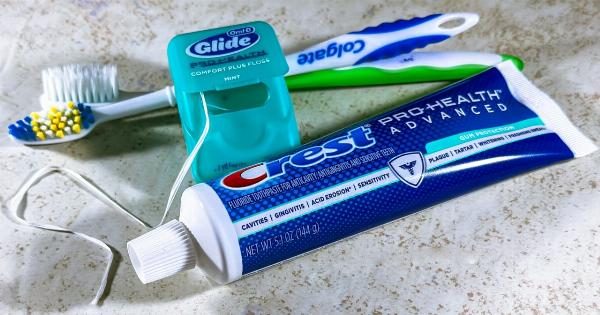Infertility is a growing concern worldwide, affecting millions of couples who are longing to conceive. Numerous factors can contribute to fertility issues, including age, genetics, lifestyle choices, and environmental factors.
Recent research has suggested a potential link between certain ingredients found in sunscreens and toothpastes and impaired fertility. In this article, we explore the impact of these commonly used products on fertility and discuss ways to mitigate the potential risks.
Sunscreens and Fertility
Sunscreens are widely used to protect the skin from harmful ultraviolet (UV) rays, reducing the risk of sunburn and skin cancer.
However, some researchers have raised concerns about the potential impact of certain chemical compounds found in sunscreens on reproductive health.
Oxybenzone and Hormonal Disruption
Oxybenzone is a popular ingredient in many sunscreens due to its ability to effectively absorb UV rays. However, studies have shown that oxybenzone may mimic estrogen in the body, leading to hormonal disruption.
This disruption can potentially interfere with reproductive processes in both men and women.
Reduced Sperm Quality in Men
Research conducted on male subjects exposed to oxybenzone has indicated a negative impact on sperm quality. This includes reduced sperm count, motility, and morphology.
Additionally, oxybenzone has been shown to disrupt hormone levels in men, potentially affecting testosterone production and overall fertility.
Female Reproductive Issues
In women, oxybenzone and other hormone-disrupting chemicals may affect the delicate balance of reproductive hormones, leading to irregular menstrual cycles and impaired ovulation.
Furthermore, exposure to these chemicals during pregnancy may pose risks to fetal development and increase the likelihood of miscarriage.
Alternatives to Chemical Sunscreens
To reduce the potential risks associated with chemical sunscreens, individuals concerned about fertility can opt for physical sunscreens instead.
These sunscreens use mineral-based ingredients like titanium dioxide or zinc oxide, which create a protective barrier on the skin rather than being absorbed into the body. Physical sunscreens are considered safe and do not contain the hormone-disrupting chemicals found in some chemical sunscreens.
Toothpastes and Fertility
While toothpaste is primarily used for maintaining oral hygiene, certain ingredients present in toothpaste formulations have raised concerns about their potential impact on fertility.
Triclosan and Endocrine Disruption
Triclosan is an antimicrobial agent commonly found in toothpastes due to its ability to prevent plaque and gum disease.
However, research has suggested that triclosan may disrupt hormonal balance, interfering with reproductive processes in both men and women.
Male Fertility Issues
Studies have shown that exposure to triclosan may affect sperm quality and function in men. This includes reduced sperm count, motility, and compromised DNA integrity.
Additionally, triclosan has been associated with decreased testosterone levels, which can impact male fertility.
Female Hormonal Imbalance
Triclosan has also been linked to disturbances in female reproductive health. It may disrupt the production and regulation of estrogen and progesterone, leading to irregular menstrual cycles and potential fertility issues.
Choosing Triclosan-Free Toothpastes
To mitigate the potential risks associated with triclosan, individuals concerned about fertility can opt for toothpaste brands that do not contain this ingredient.
Checking the ingredient list for triclosan or choosing natural toothpaste alternatives, such as those made from herbal extracts or baking soda, can be beneficial.
Conclusion
While further research is necessary to definitively establish the impact of sunscreens and toothpastes on fertility, it is important to be aware of potential risks.
Choosing sunscreens with physical blockers and toothpastes free from hormone-disrupting ingredients like oxybenzone and triclosan may help individuals safeguard their reproductive health. Consulting with healthcare professionals and considering other lifestyle factors can also contribute to maintaining fertility wellness.






























